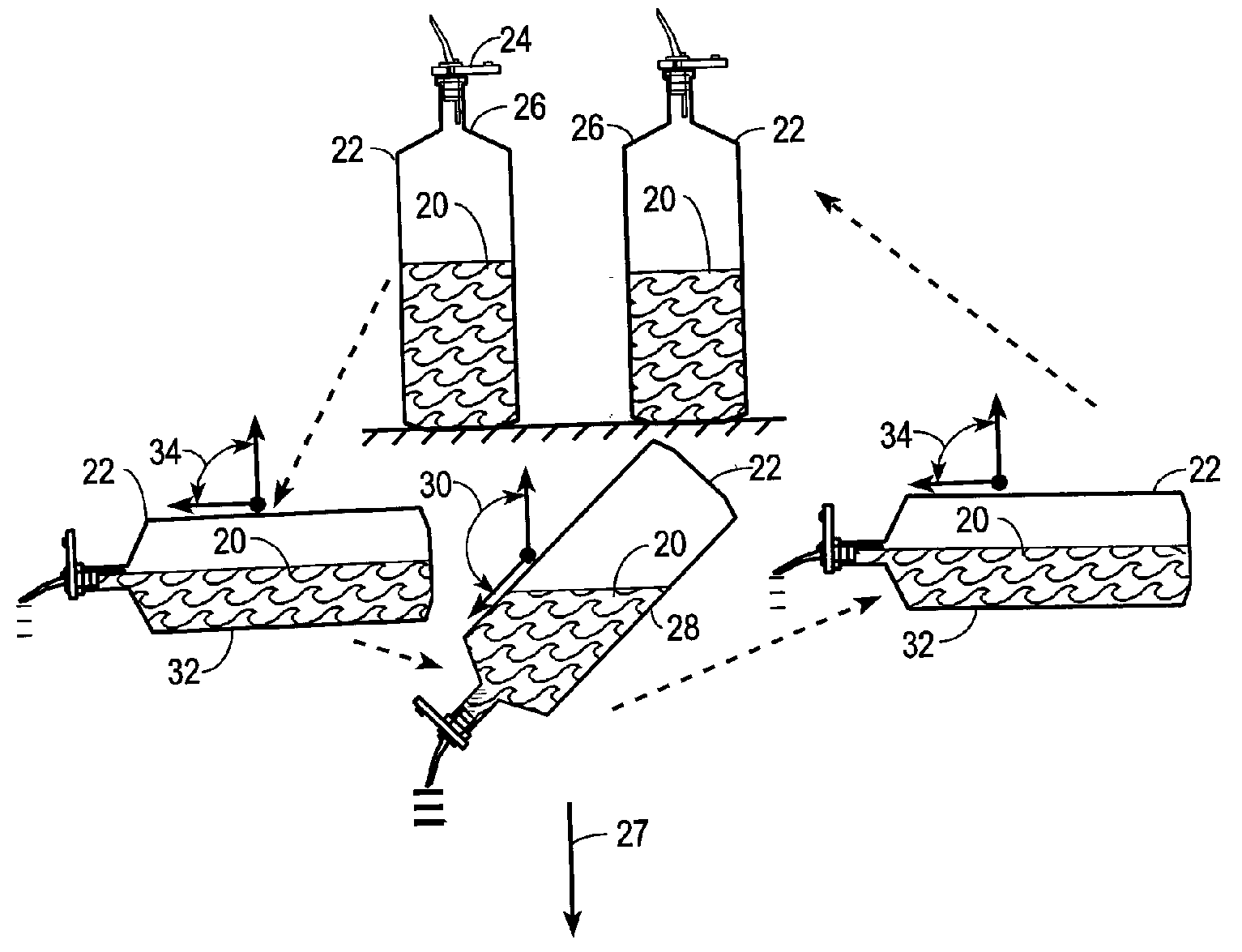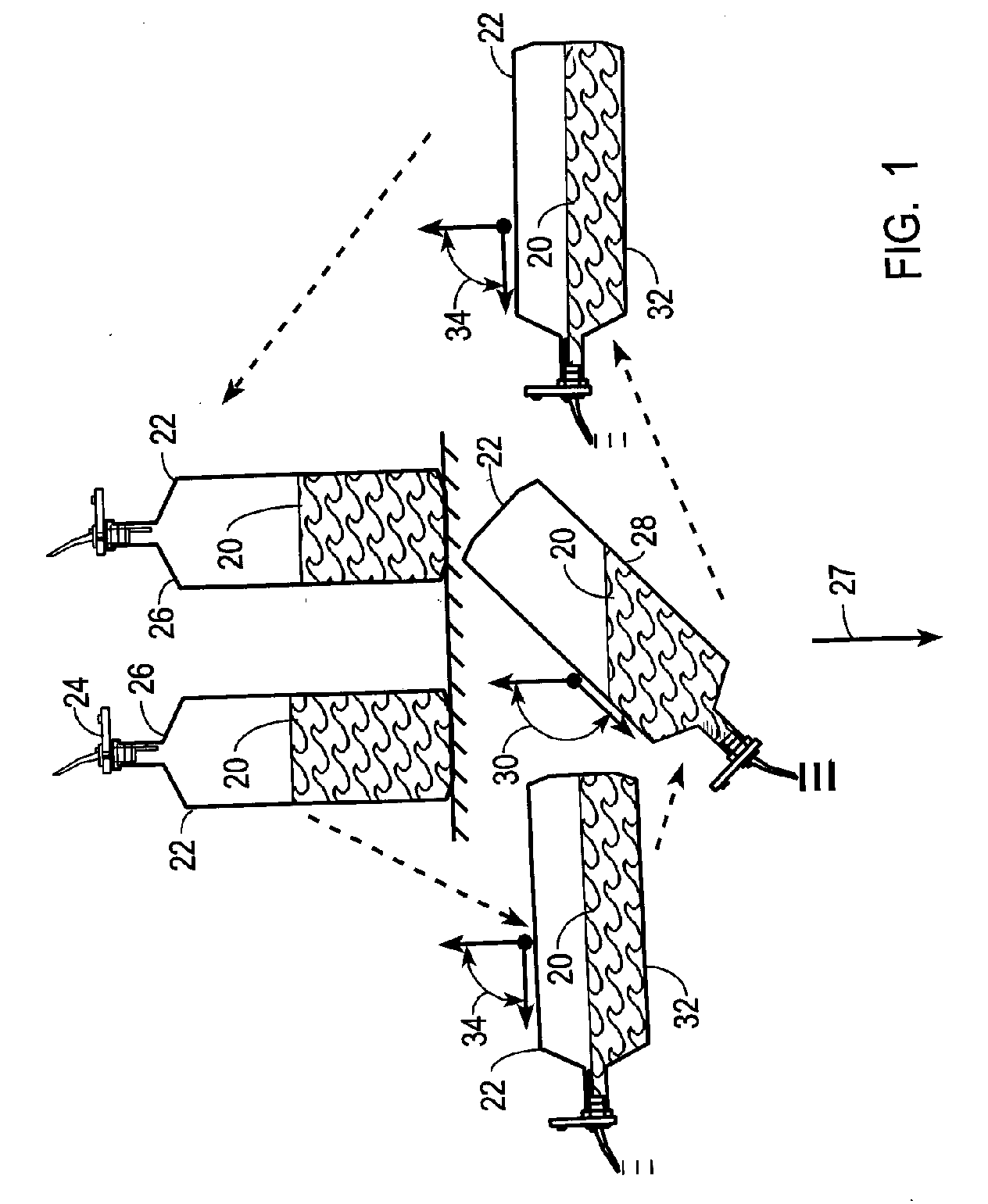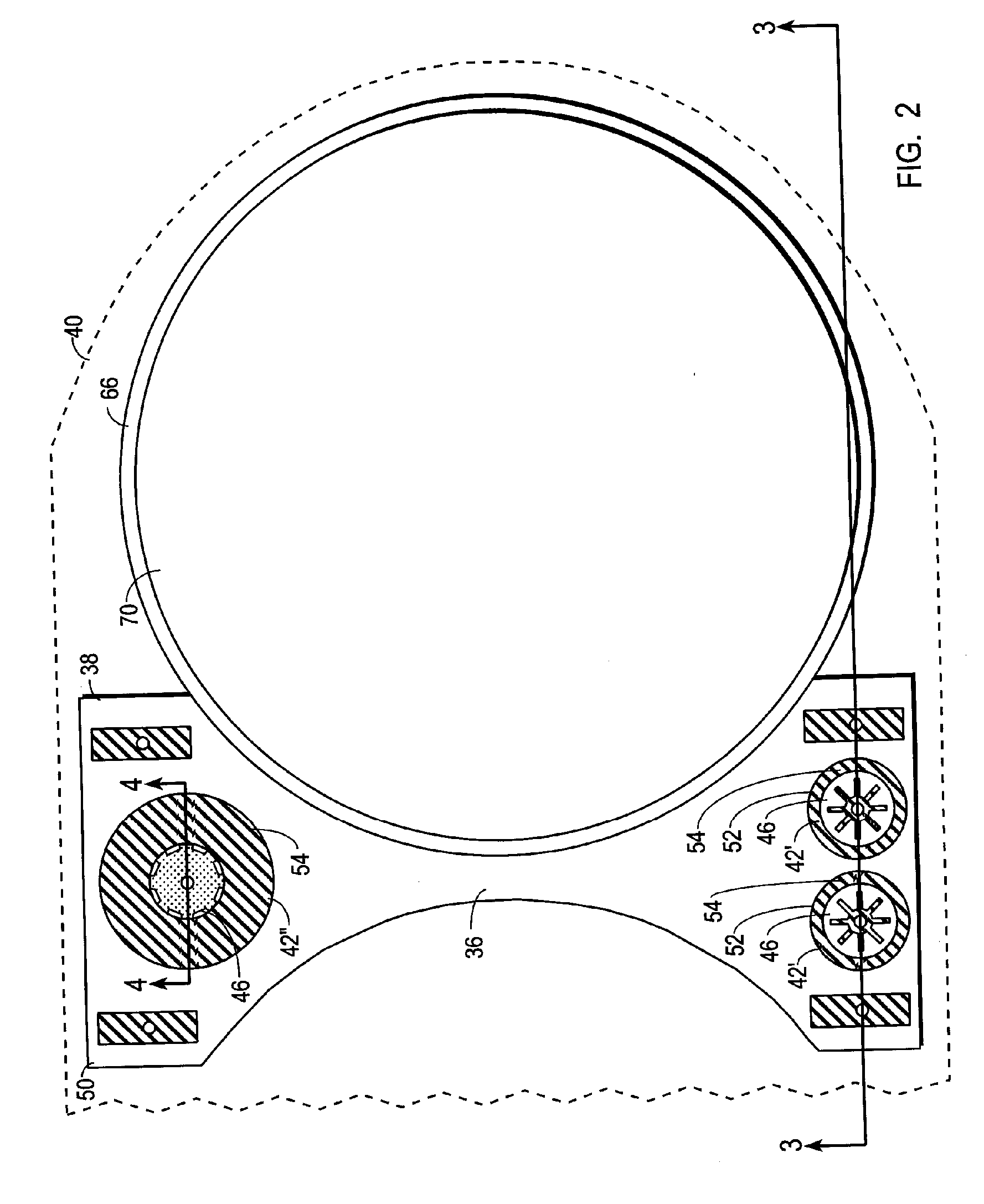Tilt Sensor Apparatus and Method Therefor
a tilt sensor and apparatus technology, applied in the field of tilt sensors, can solve the problems of single asset cost, mercury switch health hazards, undesirable mercury switch, etc., and achieve the effects of improving the tilt sensor apparatus and method, consuming very little power, and occupying only a small spa
- Summary
- Abstract
- Description
- Claims
- Application Information
AI Technical Summary
Benefits of technology
Problems solved by technology
Method used
Image
Examples
Embodiment Construction
[0034]FIG. 1 shows one of many different applications where a tilt sensor apparatus configured in accordance with the teaching of the present invention may be used. In particular, FIG. 1 shows a sequence of events depicting the dispensation of a bulk product 20 in the form of a liquid from a container 22 in the form of a bottle.
[0035] In accordance with this application, product 20 is dispensed by a user, such as a bartender or other product server, when the user pours product 20 from container 22 by tilting container 22. FIG. 1 depicts three different orientations for a container 22 that is equipped with an asset tag 24. Asset tag 24 is a battery powered, electronic device that includes a tilt sensor apparatus, discussed in detail below. In an upright orientation 26, no product 20 is being dispensed from container 22. The acceleration of gravity 27 keeps product 20 in the lower portion of container 22.
[0036] When it is desired to dispense product 20 from container 22, container 2...
PUM
 Login to View More
Login to View More Abstract
Description
Claims
Application Information
 Login to View More
Login to View More - R&D
- Intellectual Property
- Life Sciences
- Materials
- Tech Scout
- Unparalleled Data Quality
- Higher Quality Content
- 60% Fewer Hallucinations
Browse by: Latest US Patents, China's latest patents, Technical Efficacy Thesaurus, Application Domain, Technology Topic, Popular Technical Reports.
© 2025 PatSnap. All rights reserved.Legal|Privacy policy|Modern Slavery Act Transparency Statement|Sitemap|About US| Contact US: help@patsnap.com



